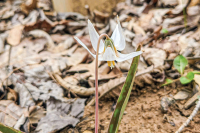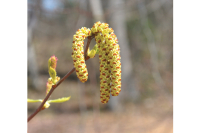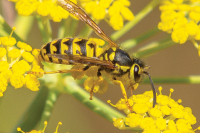Living culture: WCU undertakes project showcasing Cherokee heritage on campus
At mid-morning on Wednesday, Nov. 15, the fountain at the heart of Western Carolina University’s campus is a thoroughfare.
Our air, our water: Science program blends indigenous and western methods
In January 2020, Sara Duncan was less than a year into her role as an assistant professor at Western Carolina University’s School of Health Sciences when she started talking to Lisa Lefler, director of WCU’s Culturally Based Native Health Program, about opportunities for kids to get involved in Cherokee science.
History through story: Cherokee storyteller seeks to preserve historical memory with filming project
Kathi Littlejohn can get lost in stories. Especially Cherokee stories. Their origins are often moored in worlds long past, but these stories have a tendency to twist through the years to end up knocking on the door of modernity.
“One of my first jobs as a teenager was working at the Oconaluftee Indian Village, which I absolutely loved. I was a tour guide,” recalled Littlejohn, who is now 63. “And on bad weather days when it was real slow, it was so much fun for me to sit with the people that were doing the crafts or some of the older guides and listen to stories.”
Cherokee Friends — Teaching new visitors old traditions
 By Wil Shelton • SMN intern
By Wil Shelton • SMN intern
Visitors of the Qualla Boundary now have the opportunity to experience Cherokee culture in a new, interactive way.
The Cherokee Friends, a program through the Museum of the Cherokee Indian, funded by the Cherokee Preservation Foundation, aims to offer visitors a taste of Cherokee culture, as well as promote various sights around the community.
Former governor visits Cherokee
Former Gov. Jim Hunt toured Cherokee last week at the invitation of Cherokee Preservation Foundation.
The governor, who helped negotiate the agreements between the EBCI and the State of North Carolina that paved the way for the casino and the establishment of Cherokee Preservation Foundation, came to see how the Foundation has invested in cultural preservation, economic development and environmental preservation over the past decade. He was accompanied by his wife and their daughter Rachel.
During the trip, he toured Cherokee, taking in new facilities and improvements made to the reservation since his last visit nearly a decade ago. He also met with tribal, cultural and community leaders to talk about progress made in recent years. It was his office that allowed the birth of casino gaming on the reservation, so this tour was a chance to see the fruits of that decision, more than 10 years on.
The Cherokee Preservation Foundation has given out more than $50 million to various Cherokee projects since its creation in 2000.
“When I last visited Cherokee ten or so years ago, the cultural organizations like Qualla Arts and Crafts, the Museum, the Drama and Village had wonderful products and programs, but the facilities were dated and not up to par with other venues around the state and region. Ten years later, I see a very different picture,” Hunt told guests at an evening dinner hosted by the Cherokee Preservation Foundation.
Hunt was the governor from 1977 to 1985 and 1993 to 2001. He is the longest-serving governor in the state’s history.
Literary journal honors contemporary literature from the Cherokee community
Readers will be in for a surprise when thumbing through the pages of the all-Cherokee issue of Appalachian Heritage literary journal, which will be celebrated at Western Carolina University next week.
The issue turns on its head every generalization about Cherokee literature that’s been made before. Though it pays due homage to traditional Cherokee myths — in Cherokee syllabary as well as English — the journal also unveils the diversity of literary genres that underlies contemporary Cherokee works.
Annette Saunooke Clapsaddle, a contributing author and English teacher at Swain County High School, said the compilation of Cherokee articles, fiction, poetry and memoirs is all too rare.
“It’s a collection that I really haven’t seen, at least in recent years, in terms of diversity,” said Clapsaddle, who has also been involved in efforts to revive Cherokee children’s literature. “I think that Cherokee literature is more diverse than most people realize. Most people around here are familiar with traditional origin myths, but there’s a vibrant Cherokee writing community here and elsewhere that includes a lot of different genres of literature.”
The story she contributed to the Berea, Ky.,-based journal is a short fictional piece called “It All Comes Out in the Wash.” The story is based on a true tale Clapsaddle heard firsthand from a woman who experienced the horrors of life in a Cherokee boarding school.
“Students had been taught that all clean things are white,” said Clapsaddle. “Her skin was dark, so she thought her skin wasn’t clean. She got her skin bleached.”
Though Clapsaddle sometimes tackles grave topics, she doesn’t believe they comprise the heart of Cherokee literature.
“There’s a lot of humor in our community,” said Clapsaddle. “I like to include that in my writing.”
Clapsaddle became surprised herself when she opened the pages of the literary journal after it was released last fall. Contributing authors not only included distinguished writers like Robert J. Conley and D.L. Birchfield, but also a freshman at Cherokee High School, a chef at Harrah’s Cherokee casino and a former Principal Chief of the Eastern Band, among others.
“It’s fun to discover the talent that the people you live around have that maybe you didn’t know about,” said Clapsaddle. “Some I didn’t even know wrote.”
To get a copy of the magazine, attend Western Carolina University’s event on April 8 (see “Meet the Authors”) or visit community.berea.edu/appalachianheritage.
Cherokee leaders take stock of sustainability goals
Four years ago, Principal Chief Michell Hicks issued a proclamation intended to move the Eastern Band of Cherokee Indians towards environmental sustainability.
Last week, leaders from the tribe gathered to discuss the impact of Generations Qualla, a grant program created by the Cherokee Preservation Foundation to kick-start the effort.
“Going back to the environmental proclamation, it didn’t give us all the pieces or all the solutions,” Hicks said. “But if you look at the parts, the big picture is there.”
The tribe is moving towards long-term goals like developing a wind power system, a truck fleet that runs completely on locally produced biodiesel, and constructing an $8 million eco-business park in Jackson County. But the first steps toward sustainability have been much closer to home.
With the help of grants from the Cherokee Preservation Foundation, the EBCI has created a systemwide recycling program, moved towards energy-efficient building standards and enhanced its mass transit program. While the impacts may feel small now, the foundation’s executive director, Susan Jenkins, said the work of taking on sustainable projects one at a time will bear fruit in the future.
“We as a community –– and that includes the surrounding region –– are looking at what we want the Qualla Boundary to look like for the next seven generations,” said Jenkins.
Jenkins used the tribe’s recycling program as an example. The initiative began with a $70,000 grant to the Cherokee Youth Council to purchase recycling bins and create an education program.
Over the past year, the youth council has traveled to every tribal department to teach employees about what they can and can’t recycle and to stress the importance of recycling.
Jenkins said what began as a simple initiative turned into a learning process.
“We thought it would be simple,” Jenkins said. “The youth council would do the education, and recycling [staff] would do the recycling.”
Along the way, it became clear that a crucial piece of the equation was missing.
“We hadn’t even thought about housekeeping,” Jenkins said.
The youth council was educating tribal employees across departments, but it wasn’t communicating with the janitors who cleaned the buildings and emptied the trash cans.
The recycling staff, meanwhile, was duplicating janitorial efforts by walking all the same buildings and emptying the recycling bins. It may sound crazy, but the tribe hadn’t dealt with a comprehensive recycling system before.
Jenkins said the hang-ups created a network of problem solvers.
“It’s not always just money the groups need. It’s often about the connections, so you can begin to build the capacity,” said Jenkins.
Now the janitorial staff empties all the recycling bins into steel hoppers outside buildings at specified locations, and the recycling staff takes them away when they’re full. The tribe used to only get money for its cardboard and bottles, but these days, it’s also collecting enough plastic to ship to a processing plant.
The success of the recycling program has created a new issue.
“It’s very clear. We’re overloading recycling,” Jenkins said. “How can we bring this to scale and work together to find a solution?”
Jenkins thinks the solution is in uniting the recycling efforts between the hospital, the schools and the casino to create an economy of scale.
“We’ve got the tribe involved. Now can we get the businesses on board, too?” Jenkins said.
None of it would have been possible without the youth council’s effort to educate and push for a solution that made sense.
Jenkins said the intent of Generations Qualla funding is to create a snowball effect that leverages money and connections to create change.
For example, a $50,000 Generations Qualla grant in 2009 funded energy audits on 20 tribal buildings. With the results of the audits in hand, the EBCI Office of Planning and Development pooled another $70,000 grant from Generations Qualla with $130,000 of its own money to match a $200,000 U.S. Department of Energy Grant.
The $400,000 will go towards achieving a 30 percent reduction in energy expenditures at seven tribal buildings.
Preliminary monitoring efforts of the targeted buildings raised concerns about the air quality in the buildings. Now the buildings will also undergo an air quality assessment as part of the energy efficiency upgrade.
Jenkins said the meeting last week was a chance to check in on the progress of Generations Qualla’s initiatives, but it was also a call to action. The Cherokee Preservation Foundation will launch a new round of grant funding in June, and Jenkins hopes to see proposals that will move sustainability agendas past their fledgling stages by creating new partnerships both inside and outside the Qualla Boundary.
Grants are not limited to tribal programs and members. Generations Qualla funding has helped drive the Mountain Landscapes Initiative, a sustainable development toolkit organized by the Southwestern Planning Commission, Haywood Community College’s new low impact development degree, and the U.S. 441 Corridor Plan, among other projects.
For more information go to www.cherokeepreservationfdn.org.
Cherokee hospital uses art to build community
When the Eastern Band of Cherokee Indians took over the Cherokee Indian Hospital from the Indian Health Service in 2002, the hospital’s administrators faced a challenge.
They wanted the hospital to feel like it belonged to the community, but they inherited a building that was far from welcoming.
“People wanted to be surrounded by Cherokee things,” said Jody Adams, the hospital’s director of community relations.
The hospital’s motto “Ni-hi tsa-tse-li” means “It belongs to you,” but there was nothing Cherokee about the white walls and clinical feel inside the hospital.
Adams formed a culture committee comprised of hospital staff and community elders and turned to the Cherokee Preservation Foundation for grant funding. Susan Jenkins, executive director of the Foundation, said the hospital’s makeover mission was exactly the kind of project the organization wants to fund.
“When they came to us, we thought it was a great fit, because they would have to work with the elders and the community and reach out to the local artists,” Jenkins said.
The Foundation has contributed $20,000 per year to the hospital’s cultural makeover. Adams has overseen the projects, which partner with local artists to transform the interior spaces of the building into venues for displaying Cherokee art and culture.
When you walk in the main entrance, you can see the impact right away. A large mural in the waiting area combines Cherokee words written in the syllabary and their English translations. The television monitors in the waiting rooms show cultural documentaries instead of Fox News or CNN.
Look deeper in the hospital and you’ll see walls filled with the portraits of elders, or hand-painted with animal tracks.
Jenkins has been impressed with the hospital’s transformation. An enrolled member of the Choctaw tribe of Oklahoma, she has seen enough of IHS hospitals to know the difference.
“Now when you go in there you get a sense that ‘Oh gee, this is my place,’” Jenkins said.
Room by room, Adams’ committee has targeted rooms for overhauls. They started with the hospice room, a place where patients come to live their last days in comfort surrounded by family. Then they found an artist to design a traditional Road to Soco Mountain pattern, and they filled a hallway with it.
The waiting area to the dental clinic has a wall-sized mural of a mountain stream. Another room shows the process of making river cane baskets.
“One of the things we wanted to do with every room is teach something,” Adams said.
Adams said the latest project is to transform the hospital’s inpatient rooms.
“Most of the inpatient rooms still have that IHS feel,” Adams said. “The research shows the rooms are a factor in the healing process.”
Adams wanted new ideas for the rooms, so she turned to Western Carolina University’s interior design program for a partnership.
“I wanted new ideas. I wanted to show the nurses and the providers that there are a lot of options. We don’t have to be a facility full of white rooms,” Adams said.
Candace Roberts, a WCU interior design professor, along with her students created a portfolio of potential design schemes for the inpatient rooms and along the way they met with elders to learn about the Cherokee culture. The first transformed inpatient room was finished last week, but Adams said the transformation of the hospital will continue.
Promoting culture
Filling the otherwise institutional walls of the Cherokee hospital with cultural themes is just one of many projects funded by the Cherokee Preservation Foundation. The Foundation was formed in 2000 with a mission to preserve Cherokee culture, enhance economic development and improve the environment using casino revenue. Since 2002, the Foundation has given out more than $47 million in grants throughout the region, which in turn have generated more than $100 million when combined with matching money.
Historic Cherokee letterpress carries exciting potential for new art
The newest addition to Southwestern Community College’s Oconaluftee Institute of Cultural Arts holds a piece of Cherokee history. OICA will soon obtain a letterpress that will be used to print books in the Cherokee syllabary.
“We are bringing back the Cherokee history in true art form,” said Luzene Hill, OICA progam outreach coordinator.
Through a $68,846 grant from Cherokee Preservation Foundation and a $47,792 grant from the Institute of Museum and Library Services, OICA will purchase a metal press and develop a printmaking studio at its facilities on Bingo Loop Road in Cherokee.
Years ago, the Eastern Band of Cherokee Indians published a newspaper called Tsa la gi Tsu lehisanunhi, or the Cherokee Phoenix. This first Native American newspaper was printed on a hot-type letterpress in which each word is put together by hand, combining individual metal letters or characters.
“It opens up a whole new craft of book art for us, including printmaking, hand-papermaking and hand-bookbinding,” said Hill. “For our students, book art will blend fine arts with crafts.”
After 12 years, Sequoyah finished developing the Cherokee syllabary in 1821. Each character represents a syllable, instead of one sound, thus the name syllabary.
As in the Phoenix newspaper, the power of the Cherokee language rises through the printed word on the page, transforming from thoughts to art, Hill explained.
“You already feel the power of words but capturing them in a book through individual characters you’ve laid out in hot type and on paper you’ve made from linen or hemp fiber really helps you feel them in an art form, too,” said Hill.
As students learn to produce first the paper and then the books, they will also learn skills such as precision, technique, spacing and artistic layout composition, said Hill, who is consulting with noted instructor Frank Brannon.
Brannon, who runs his own letterpress studio, SpeakEasy Press, in Dillsboro, earned his master of fine arts in Book Arts at the University of Alabama and has recently taught Letterpress at the Penland School of Crafts and Papermaking and Printing at the John C. Campbell Folk School.
“One of Frank’s specialties is the Cherokee Phoenix newspaper,” said Hill. “He has explored and published copies from the original hand impressions of type from the Phoenix, found in a 1954 excavation of the New Echota historic site. He hand printed and hand bound the publications for exhibition.”
“The Phoenix was a bilingual weekly newspaper printed in parallel columns in Cherokee and English and one of its biggest subscribers was the British Library,” said Brannon, who also teaches at Book Works in Asheville.
The first paper that the Phoenix was printed on came from Knoxville by wagon and it took two weeks to arrive, according to Brannon. The last issue was published in 1834, shortly before the Cherokee removal to Indian Territory in Oklahoma.
“Students will learn the Cherokee history right along with the history of the letterpress,” said Hill.
The Cherokee language will also be incorporated into the course since the books can be published in the Cherokee syllabary, she added.
For more information contact Hill at 828.497.3945.
Grants benefit Cherokee arts
Cherokee Preservation Foundation recently awarded 25 new grants totaling nearly $3.2 million. Here are a few targeting the arts:
• A $600,000 grant was awarded to Cherokee Historical Association to complete stair and handicapped access upgrades and install new seats at the Mountainside Theatre, and to improve the Onconaluftee Indian Village by constructing a children’s learning center, creating a new outdoor market for craft sales, and renovating village dwellings. A separate $20,000 grant will enable CHA to develop a new Village Guide and Theatre Training program modeled after a program utilized by Colonial Williamsburg to train their guides to be certified historical interpreters.
• A $95,000 grant will support the continuation of the Festival of Native Peoples, a culture-based event featuring performers and artisans from tribes across the United States, Canada and Mexico.
• A $6,800 grant has been awarded to Cherokee High School so students can participate in a summer program to learn how to harvest, process and dye river cane basket materials.









